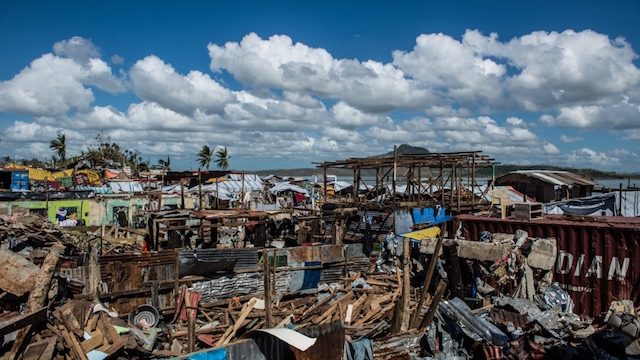SUMMARY
This is AI generated summarization, which may have errors. For context, always refer to the full article.

The Philippines had an important messenger of climate action earlier this week. It was none other than former US Vice President Al Gore, visiting the country to help build a corps of young climate leaders in the country. The Climate Reality Project led by Mr. Gore is galvanizing citizens to demand action and create momentum for the change that they want to see in dealing with the climate challenge in their countries.
The enthusiastic response to Mr. Gore’s call is testimony to the multitude of activists in Philippine civil society, among the most passionate about climate and sustainable development issues in their country. They are increasingly using evidence based advocacy to urge low-carbon, climate-resilient development in the country.
Their actions will have important implications for how the Philippines fulfills its Intended Nationally Determined Contribution (INDC) pledge. This pledge – and those of the 180+ other signatories to the 2015 Paris Agreement – will become the cornerstone of collective global action on the pre-eminent challenge of keeping the temperature increase below 2°C.
The universality of this mode of action is a unique and unparalleled achievement of the multilateral UN-led processes. It has upheld the principle of common but differentiated responsibility and respective capability by allowing all countries to determine what they are willing to take as a climate commitment, while respecting their national circumstances.
The pledges also signal a groundswell of bottom-up action and a commitment by a nation to be honored by its citizens, state and non-state actors. As part of its commitment, the Philippines will reduce its emissions by 70% by 2030 compared to the business-as-usual scenario for 2000-2030, contingent on the availability of international assistance. The Philippine INDC possesses 3 very unique features:
- Pursuit of climate change mitigation is seen as a function of adaptation. To my mind this clearly lays the ground rules that the country can embark on a low-emission development path if, and only if, it is climate-resilient and has the necessary adaptive capacity. The Philippines has placed resilient development at the heart of its climate action.
- Need to peak greenhouse gas emissions is seen as an opportunity, not as a cost. This stance is a departure from the historical discourse on climate change, wherein climate action was seen only as a cost to the economy, with disregard to the fact the climate action contributes to sustainable development. This interpreted by the Philippines as an chance to be more efficient, enhance resilience, build adaptive capacity, and transition to sustainable and clean energy solutions.
- Ethical basis for climate action finds its place in the Philippines’ INDC. The emphasis on human rights, the rights of indigenous people and local communities, gender equality, and intergenerational equity in the context of climate change are all articulated in the INDC in a very principles-based approach that is visionary in all its aspects.
However, while the intent has been made clear in the INDC of the Philippines, the moot question is when this intent will translate into an investment plan. The INDC is predicated on availability of international assistance, for which the Philippines as well as other developing countries needs as a bare minimum 4 essential ingredients:
- Investment plan which encompasses the intent of the INDC
- Strategic basis for demanding international support, which will require a clear plan for domestic mobilization of resources too.
- Articulation of the technological transitions that will be made, and support for them.
- Clear assessment of the institutional capacity and its enhancement that will be required to deliver the climate pledge.
We at ADB stand ready to enable the realization of INDCs of our developing member countries. We are currently preparing our strategic framework for climate change action, which will be a blueprint for ADB’s support to its developing member countries from now up to 2020, and then beyond from 2020 to 2030. We have already announced a doubling of climate finance by 2020 from $3 billion currently to $6 billion in 2020 – and firmly believe that addressing climate change in Asia and the Pacific requires us to look beyond the financing issue. It will require a closer examination of technologies and partnerships to engender low-carbon, climate-resilient development.
The next step for the Philippines is the opening ceremony for the signing of the Paris Agreement convened by UN Secretary-General, scheduled on April 22 in New York. The agreement will be open for signing from then until April 21, 2017.
The Philippines, according to National Climate Change Commissioner Emmanuel de Guzman, is making preparations for the ratification of the pledge by its Senate by May this year. For the activists that Mr. Gore met this week, it can’t come soon enough. – Rappler.com
Preety Bhandari is responsible for providing policy and strategic direction to ADB’s climate change program. Prior to joining ADB, she headed the Finance, Technology and Capacity Building Program of the secretariat of the UN Framework Convention on Climate Change and has also worked as the Director of the Policy Analysis Division at The Energy and Resources Institute in India.
Add a comment
How does this make you feel?
There are no comments yet. Add your comment to start the conversation.